Chris Grinter tarafından, on May 30th, 2010 For the rarely reoccurring quiz series, here is a new image. Who is this moth?
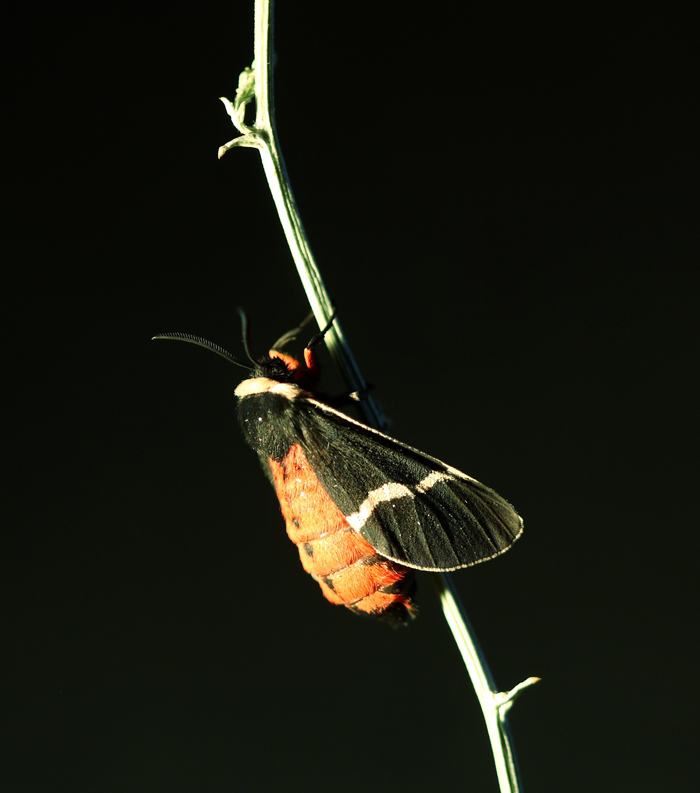
Chris Grinter tarafından, 25 Mayıs'ta, 2010 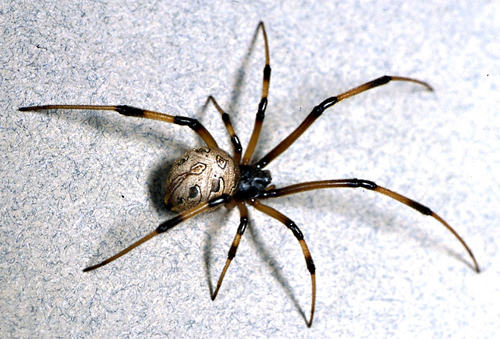
For those Californians reading, especially those in the south, keep an eye out for this beautiful little spider, Latrodectus geometricus – the brown widow. Arachnologists at UC Riverside are monitoring the spread of this invasive species. Ironically it turns out to not be as dangerous as our native black widow. Nonetheless, it is not from ’round these here parts (should be said in your best southern twang). If you find a specimen, especially if you’re not in LA/Orange/SD counties, you should contact the team at UCR.
Chris Grinter tarafından, 25 Mayıs'ta, 2010 Kore sıcak bir savaşın kenarında teetering ile, benzeri görülmemiş bir oran ve Jamaika sivil huzursuzluk bir ekolojik felaket (Birisi Performansımı yok ettiniz) – diğer kaynaklardan günümüzün birkaç manşetini saymak gerekirse – CNN ön sayfasını süslemek için zaman ayırıyor.

I usually get a little excited when I come across articles like this because I always have hopes for something so ridiculous it has to be discussed. Thankfully CNN is run by teams of drunken marmosets who like to fling crap at us. Before the Skeptical Moth epoch I would share links to cover page stories on the findings of bigfoot, chupacabra and aliens with just a few friends or spread it around facebook. Now I can ridicule CNN on a google archived medium.
I just do not understand the point of this article. John Blake doesn’t discuss an explanation for this phenomenon, offer an opinion, or ask any questions. Emin, he asks if God really cares who wins, but that question isn’t any more valid than asking if my dog (also fictional) cares what kind of car I drive (unless of course it is psychic! Cidden…people believe this). When I read articles like this I feel as if I am grading papers in a high school english class. There is no journalistic integrity, intelligent opinion or factual basis for the scribbling – there are just pretty pictures and words illustrating them. Setting the whole prayer and faith issue aside; athletes have always been known for their superstitions (another). The “acceptance speech” phenomenon undoubtedly falls under this category. After achieving a statistically small outcome (görmek hot hands), they are afraid of forgetting God in fear of magically losing their ability (not necessarily consciously). For some reason Blake restrains this article to only sports – perhaps he is intentionally playing into the massive demographic of American sports loving, bud-light swilling, christians – but clearly this is a reoccurring theme. At any awards ceremony God, Jesus or Allah is usually at the top of the thank-you list. Forget all that hard work and talent you might have, it was something or someone else. Abandoning all rational thought to a mystical being is a dangerous thing. This mindset is the same one that allows addicts to blame anyone but themselves (even if addiction is in part hard-wired), believe in faith healing, start a holy war, or let the Catholic church blame the devil.
CNN is flashing the lights and jingling the keys over the faces of their readers. Usually I leave it up to FOX news to insult my intelligence, but I am glad to know I have a choice in this market.
Chris Grinter tarafından, on May 24th, 2010 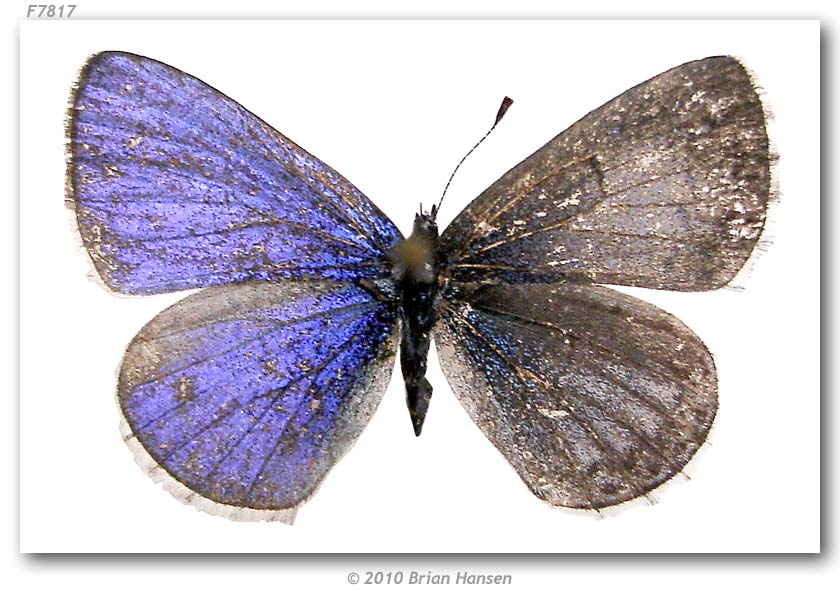
A once in a lifetime occurrence, Bir bilateral gynandromorph. Kısacası, a glitch during cell differentiation creates asymmetrical chromosome patterns, which leads to asymmetrical sex expression in the adult insect. If you haven’t clicked the link above, do so, it’s an excellent description with some awesome photos.
Back to the butterfly. I was in the field this March just above the middle fork of the American River on the hunt for Xanthothrix, with me was Brian Hansen and Bob Patterson. Bob and I were on a mission, to locate a remote patch of Coreopsis high on serpentine soils, and to find our rare little moth. Brian came along to enjoy the day and explore the butterfly fauna. While Bob and I hiked ahead anxious to see if the days hike would be worth it, Brian stopped frequently to net passing leps. It was probably less than an hour out from the car when we hear form behind us on the trail “Hey guys… I think I just caught a gynandromorph!!!” Tamam, I was skeptical. Bob and I approached to see Brian holding a little blue in his hand, which unmistakably, was a bilateral gynandromorph. I was blown away. Bob has over 50 years of experience as an avid lepidopterist and has never seen one of these in the wild. To make this feat even more impressive, this small blue butterfly is one of the commonest insects in the American west in the spring. Bugün, they were puddling in great numbers along the trail, and I hadn’t even stopped to blink at one. Brian just netted a one in a million catch. Perhaps it is the curse of a jaded lepidopterist that will keep me from such once in a lifetime discovery; but I know I will be looking closer at even the commonest butterfly as it wings by me.
So as you can see the butterfly is exactly half male and half female (the right side is female). If you look very closely you can even see a perfect vertical line bisecting the body if the insect (looks like a photoshop edit almost), gynandromorphism after-all is expressed throughout the entire body and even the genitalia are contorted into strange shapes.
The specimen is in Brian Hansen’s personal collection, and you can find the images hosted on the Butterflies of America website.

Chris Grinter tarafından, 23 Mayıs'ta, 2010 
Doğal olarak, it was named Phallus drewsii. This comes form the list of the top 10 species named içinde 2009, Arizona Eyalet Üniversitesi tarafından uyulması (değil çok iyi bir liste halinde 7 Yeni türlerin orada değildi…). While I tend to avoid phallic and O’Keeffesque botany, this one I couldn’t resist because it was named after someone from my own institution. Dr. Robert Drewes now has a small phallic fungi named after him (with permission). Taxonomy humor at work.
Chris Grinter tarafından, on May 18th, 2010 
Has just been posted over at Bush Kınkanatlılar. Go over and explore the latest moth carnival, a gathering of blogs that have featured moths in one way or another over the last month or so.
Chris Grinter tarafından, on May 18th, 2010 News in from India, a butterfly photographer has been kidnapped. A local park official who was visiting the north eastern province Arunachal Pradesh was taken at night by a gang of armed youth-rebels. Efforts to find him have been hampered by the weather and remote terrain. India has recently become one of the most difficult countries to conduct research in, and now we are all reminded of its continuing history of violence. Often it is within the remote and wild portions of a developing country that harbors both stunning biodiversity and militant dissidents. While in Ecuador my group kept an eye out for Columbian FARC rebels who may have strayed across the border; thankfully it was only a minute possibility they would be there in the first place, and nothing was seen. I think some of my most harrowing field work has been along the US-Mexican boarder states and in Mexico itself. Drug runners would rather shoot you before asking you to move out of their way, and roaming banditos were responsible for a murder of a colleagues friend in Oaxaca years ago. Not surprisingly, the lure of untapped biodiversity keeps pulling us in. Stay safe in the field!
Chris Grinter tarafından, on May 5th, 2010 Over a long weekend I’ll be out in the field. Stay tuned for incredible stories (no hype here…).
While I’m away enjoy the following from other excellent bloggers:
Continue reading Gone Collecting
Chris Grinter tarafından, on May 5th, 2010 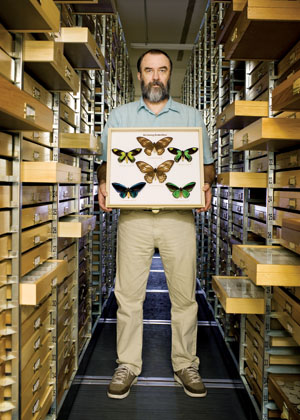 It’s good to throw a changeup every one in a while, and this week here is an article that is actually GOOD. Evet, you read it here first, Bir positive article about entomology collections. We all need a breather after that Fox news fiasco with the Michigan State collection. The Honolulu Magazine does a really great job (hey… I knew that title sounded familiar… it’s a book by May Berenbaum) and they actually seem to get it. There are some great quotes from Dr. Neal Evenhuis (pictured) and Shepherd Myers; go read about the Bishop Museum’s collections and the awesomeness of being an entomologist on one of the most beautiful places in the world. Aslında, Neal, need a curatorial assistant? It’s good to throw a changeup every one in a while, and this week here is an article that is actually GOOD. Evet, you read it here first, Bir positive article about entomology collections. We all need a breather after that Fox news fiasco with the Michigan State collection. The Honolulu Magazine does a really great job (hey… I knew that title sounded familiar… it’s a book by May Berenbaum) and they actually seem to get it. There are some great quotes from Dr. Neal Evenhuis (pictured) and Shepherd Myers; go read about the Bishop Museum’s collections and the awesomeness of being an entomologist on one of the most beautiful places in the world. Aslında, Neal, need a curatorial assistant?
Chris Grinter tarafından, 4 Mayıs'ta, 2010
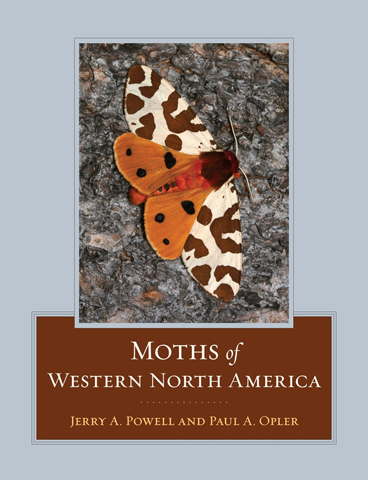
Farkında olmayanlar için, yeni bir kitap geçen yılın sonunda pazara. “Batı, Kuzey Amerika Güveler“, Powell ve Opler. Anda sadece $95 her kuruş olduğunu (veya $75 e-kitap için, ama e-kitap nefret). Batı eyaletleri için olağanüstü ve türünün ilk örneği.. Sadece muhteşem bir referans değil, ama tüm böcek kitapları için çıtayı belirliyor. Numara, batıdaki her güve orada değil (bu masamı ve cüzdanımı kırardı 6,000 tür), ama hemen hemen her cinsten ve yaygın ya da dikkat çekici türden birinin fotoğrafı var., yaşam öyküsü ve dağılımı. En önemlisi mikrolepidopteraları kapsar.. Doğu muadili üzerinde büyüdüm, Doğu Kuzey Amerika Güveleri Covel tarafından. iki kopyam vardı, biri saha için, diğeri masam için – ve alan kopyasını en az bir kez değiştirmek zorunda kaldı. harika bir kitaptı, ama Powell ve Opler onun etrafında tur attılar.
Diğer iyi haber ise, artık tüm 1,228 güve çizimleri ve ilgili veriler için çevrimiçi Bedava. CalPhotos'a gidin ve Powell'ı arayın, veya buraya tıklayın. Bunun güzel yanı, kitaptaki biraz daha küçük olan microlep fotoğraflarının daha iyi tanımlama için yüksek çözünürlüklü olarak mevcut olmasıdır.. Referansa güzel bir ek ve herkese bir CD göndermekten daha kolay.
|
Şüphecilik
|









